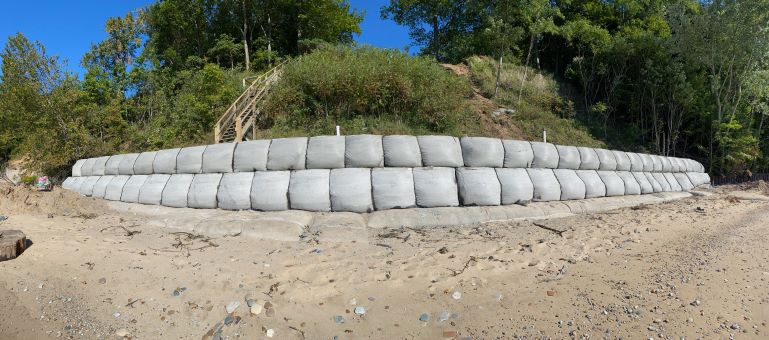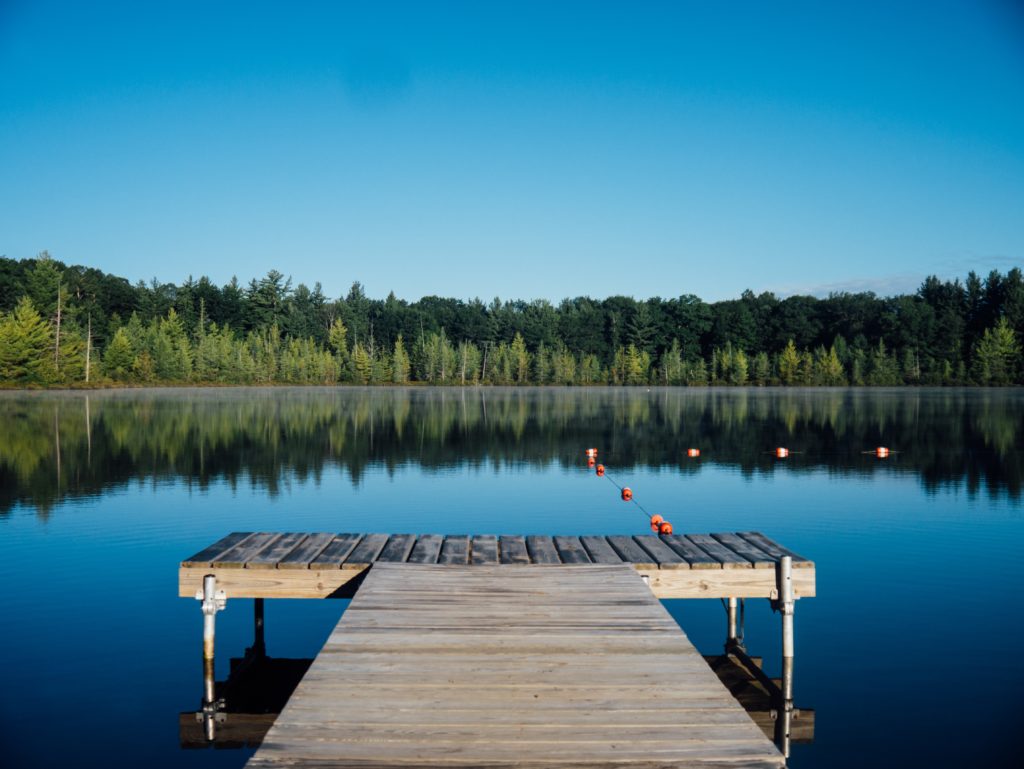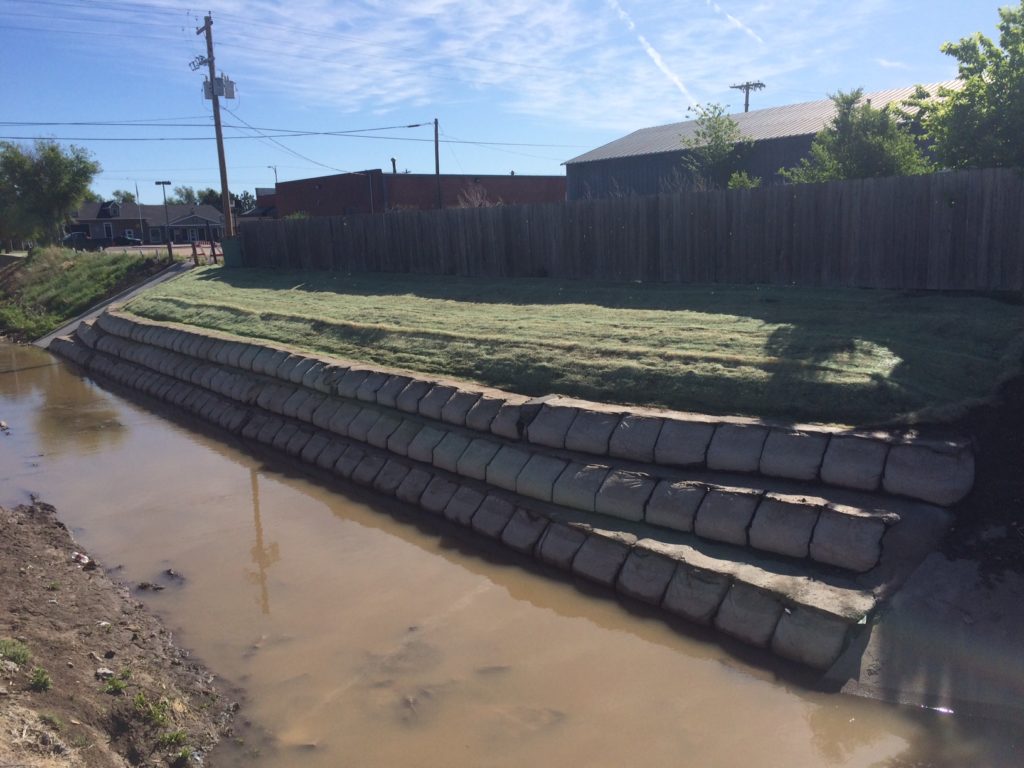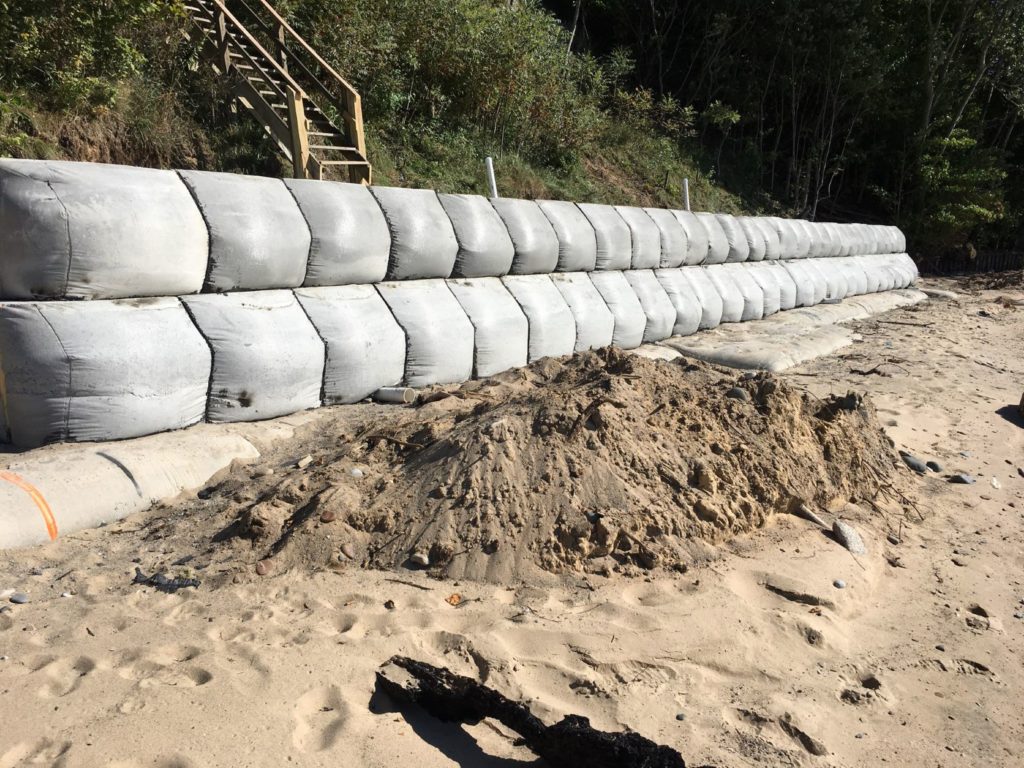How To Build A Seawall On A Lake
Seawalls have useful applications for inland lakes. Learn more about constructing a lake seawall and the benefits of using TrapBag erosion control barriers for your next seawall project.

Seawall construction can help prevent damage to the land surrounding inland lakes. We’ll discuss all the details below.
What are seawalls?
Seawalls are vertical or sloped structures built along the coast to prevent the sea from eroding the coastline and causing damage during storms or floods. Generally, they are made from concrete and vary in design based on their purpose and location.
Seawalls for inland lakes
Inland lakes are subject to extreme weather conditions, and a well-built seawall can become your last line of defense against floods and property damage.
Shoreline erosion control
Shoreline erosion can hurt both the environment and property value. It will shrink the usable land around the lake and cause large sections of soil to collapse. The additional sediment in the lake will kill plants at the bottom and deliver more pollutants into the water.
You can prevent erosion from getting too extreme and avoid shoreline erosion’s most severe consequences with a seawall. The shoreline won’t sink past the seawall, and the lake won’t experience the negative impact of additional sediment.
Storm surge prevention/protection
Storm surges are one of the greatest threats to lakefront property. If you live in a hurricane or tropical storm region, then the devastation can be even worse. A seawall will prevent flooding that causes property damage, save roads from closure, and keep people safe.
Preserve natural habitats
The local animals will also benefit from your seawall. Extreme lake erosion can cause animals to retreat further inland after losing their homes. This can damage the lakes’ ecosystem and drive more pests like squirrels and rats onto your property.
Lake Seawall Construction
If you think a seawall is a good idea for your lakefront property or community, there are several facts you must consider before construction.
Seawall Type
The first thing you’ll have to decide is the type of seawall you want to construct. Each shape has its benefits and is better suited for a unique environment.
- Vertical: Vertical seawalls are inexpensive and straightforward to build. They deflect wave energy away from the coast and can absorb energy with their loose rubble. However, they are also the fastest to become damaged and can erode from the bottom.
- Curved: Curved seawalls are much better at spreading wave energy, so they don’t erode as easily. The curve at their top prevents waves from overcoming the wall. Their engineering process is relatively complex and is still susceptible to undermining.
- Natural: Natural seawalls are one of the best ways to protect against the elements. Things like coral reefs, mangroves, and coastal plants can create a natural defense against erosion that doesn’t hurt the environment.
Seawall Materials
The material you choose for your seawall will impact its durability. However, some materials might not be necessary (and are too expensive) for low-risk environments.
- Wood: Wood isn’t usually used for seawalls because it erodes and gets damaged much more quickly than other materials. If you decide to construct a wood seawall for your lakefront it must be for very mild conditions and undergo regular maintenance.
- Concrete: Concrete seawalls can last up to 30 years. They require specific engineering designs to fit the coast front, making them expensive and adaptable to any environment or situation.
- Metal: Steel is the most common seawall material because it’s easy to install and durable. It can last more than 25 years with proper care to avoid corrosion. Aluminum is less likely to corrode but can’t be built into very high structures.
- Composites: Composite seawalls are an inexpensive solution for keeping the water at bay. They fit into tight spaces well and are very easy to install.
Seawall Cost
A seawall costs about $25,000 on average based on its materials, size, and the permits necessary to build one. Keep in mind that freshwater lakes have a significantly lower cost than seawalls for coastal regions.
- Materials: Seawalls materials from cheapest to most expensive go: vinyl, wood, metal, concrete. Vinyl is $150-$250 per foot and is the least costly, and concrete ($200 – $800) costs the most because of the structural design necessary to construct it. Steel is about $250 to $500 per foot, and wood is $100 to $200 (but will cost you more in maintenance).
- Size: Seawall’s cost is typically measured in feet. The average price is $150 to $800 per foot but can cost up to $2000 depending on the area, height, and depth.
- Permits: Check your local seawall permit application to find out how much a permit will cost you. States like Florida and Texas have especially high costs for building a seawall.
Seawall Considerations
Before you build a seawall, there are a few factors you should consider.
- How busy your shoreline is. The activity on your shoreline will determine how strong your seawall needs to be. You can relate that activity to high-profile property value or weather. In either situation, you should base the necessary strength on how much risk there is and how much you have to lose.
- Type of water the seawall is built in. A lot of the information you find about seawall requirements will be related to saltwater. Keep in mind that inland lake sea walls will be much less expensive and won’t require such extreme maintenance as a coast sea wall. If you want better information, consider researching lake retaining walls instead.
- Aesthetics of your seawall design. Nobody wants a big ugly fence around their lake. An eyesore seawall can end up costing you more in property value than the lake’s erosion ever would. Consult the people in the area to see what designs they might find attractive.
TrapBags for Lakefront Seawalls
As an alternative to a seawall, you can always try TrapBags. They don’t require complex engineering and will provide all the protection you need for your property.
Like conventional sandbags, TrapBags are bags filled with materials and placed as a defense against shoreline erosion. They can be filled with anything from sand to concrete and help stop flash flooding, mudflows, levee breaches, storm surges, and much more. You can line up and stack TrapBags where you would want to construct a seawall. They will protect the lakeshore and prevent property damage from floods. You can also stack them in a tiered system for larger shores and different water levels.
Benefits of using TrapBags for lake seawalls
TrapBags are much less expensive and easier to assemble than a traditional seawall. When covered with soil, they provide a more natural-looking barrier and promote local plant growth in the area.
FAQs
If you still have some questions about seawalls, check out these FAQs.
How long do seawalls last?
One of the advantages of seawalls is that they last a relatively long time. A seawall can last anywhere from 25 to 50 years, depending on how well you maintain it and the material you use.
Do seawalls need to be repaired and reinforced over time?
Seawalls require regular maintenance like most marine structures. They need to be refurbished and reinforced every five to six years to achieve the best results.
What is the difference between seawalls and bulkheads?
Seawalls protect from waves and keep soil in place and safe from collapse. Bulkheads only keep dirt in place but do not protect against waves.
Start your project today with TrapBag
If you don’t want to spend a fortune on your lake wall, you should try using TrapBags instead. They will provide all the protection you need at a fraction of the cost (and they’re easier to assemble). Browse our products or contact TrapBag for a quote today! [/vc_column_text][/vc_column][/vc_row]
Get the Dirt Before the Flood Hits
Stay ahead of flooding, erosion, and disaster response challenges. The Dirt, TrapBag’s monthly newsletter, delivers field-tested tips, real-world case studies, and the latest in barrier technology straight to your inbox.



